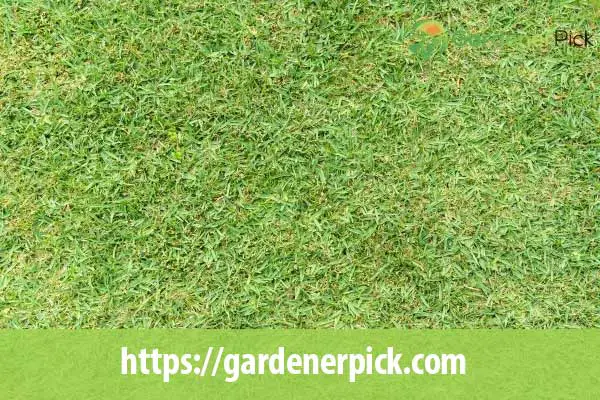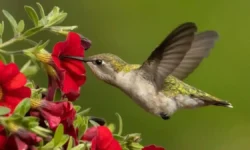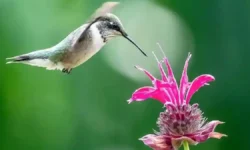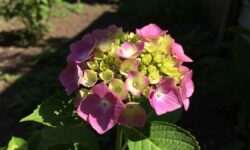Are you worried about dying St. Augustine grass on your lawn? Have your neighbors pointed out that your garden does not look cool anymore? Have you lost all the hopes of a revival of your lawn?
If yes, you are not alone. Many garden owners face the same situation every year.
Don’t worry, you clicked exactly the right spot. As we are going to explore all the causes of your problematic St. Augustine lawn and ways to fix it in this article.
Have you any idea how to revive St. Augustine grass? The revival of your St. Augustine lawn mainly depends on the extent of the damage. If your lawn is truly dead, there are no chances of revival. You have to start from scratch. However, proper watering, fertilization and elimination of pests and herbs can revive your lawn in the case of yellowing, thinning and bare spots.
St. Augustine is the best grass for the lawns in the temperate climate. It grows well in the warm weather and full sun. Though it is heat tolerant, improper care and lack of maintenance can develop brown patches in your lawn. What will you do to bring back the greenery of your lawn?
How can you prevent this from happening in the future?
To know the answers, read this article till the end!
Table of Contents
5 Top Reasons For Dead St. Augustine Grass
Before you search for the solution to your suffering lawn, it is really important to know the actual cause of this lackluster.
For your ease, we have explained the 5 possible causes for dead St. Augustine grass. Let’s have a look below:
Pest Infestation
Unfortunately, the St. Augustine lawns are vulnerable to pest infestations. The most common among them is Grub worm infestation that usually attacks in the summer through late fall. The white Grubs are C- shaped larvae of beetles that feed on the roots of the grass. These worms cut off the water and nutrient supply to the blades resulting in dying grass.
In addition, Chinch bugs are also damaging the St. Augustine grass. These bugs are the fluid suckers of grass. They leave a secretion behind that blocks water and nutrient supply to the turfgrass.
However, early intervention can save your lawn from dying completely.
Grass Diseases
Mostly, the main causes of your dying St. Augustine lawn are diseases. Amongst them, the most common is Brown Patch and Take All Patch disease.
As the name indicates, the Brown Patch attacks as a result of a fungus that spreads in warm and humid conditions. Another major cause of this disease is watering in the evening leading to the wet grass overnight that provides the perfect medium for the fungus to grow.
The Take All Patch disease occurs due to a root rot fungus that weakens the root system and ultimately results in dying grass. On hot summer days, the chances of grey leaf patch are more that may result in purple or brown patches
All of these diseases can be proved deadly for your lawn if left untreated.
Over Fertilizing
Most homeowners, in the attempt of lawn renovation, apply excessive nitrogen fertilizer to the St. Augustine grass. It may end up burning their lawn. Instead of quick growth, grass may develop dark patches followed by dead spots. Excessive fertilizer causes root damage and may result in brown and yellow discoloration.
Therefore, following a proper guideline is necessary while selecting fertilizer according to the need of your lawn.
Insufficient Water Supply
St. Augustine grass requires three to four times water in a week to thrive. During the high-temperature days, the water dries out quickly leaving the grass in stress.
If this condition persists for 6 weeks, the grass will develop brown patches and seems to be dying.
However, you can bring your grass back to life by supplying sufficient water.
Soil Type
A healthy turfgrass survives well in good quality soil. But if the soil quality is poor, your grass will not grow healthily. Normally, St. Augustine grass produces a layer of dead organic matter between soil and grass called thatch. Though it is natural, if this layer exceeds 1 inch, it can provide a good place for fungus to grow and for pests to hide.
Similarly, highly compacted soil beneath grass can also cause dead patches. Moreover, this grass doesn’t do well in acidic soil.
5 Methods to Fix/Revive St. Augustine Grass
Well, now you are fully aware of the causes of dying St. Augustine grass. Once you know the reasons for your colorless lawn, fixing or revival becomes easy.
Here are a few methods to bring your lawn back to life. You just need to focus below:
Lawn Watering
You may be surprised to know that watering adequately can revive your dying lawn. In prolonged hot weather, the St. Augustine grass experiences drought stress. To minimize the chances of this stress, you have to make sure to water 3/4 inches at least two times a week.
If you are reviving your grass, 1 ½ inch of water is necessary. Always select good quality sprinklers, and increase the irrigation time if you feel the ground dry.
But keep in mind the important points mentioned below.
- Make sure to water at the right time. Instead of early morning, sunrise is the proper time for watering.
- Avoid watering in the evening times, it may result in moisture retention and more chances of developing mold. Use a timer for sprinklers.
- Make sure not to drown your garden, proper drainage is necessary for healthy soil.
Soil Improvements
As mentioned already, St. Augustine grass requires good quality soil to nourish. It grows well within a soil PH range of 5.0 to 8.5. For this purpose, perform a soil test, by using a soil test kit and send it to a lab. If the result shows soil to be acidic, change the soil with lime. However, alkaline soil needs the addition of sulfur.
For other soil improvements, the following steps should be taken;
- For healthy growth of the St. Augustine grass, 5% organic matter is necessary. If your soil test result is showing a lack of nutrients, add them to soil accordingly.
- Ensure that the soil is well aerated, well-drained, and potent, otherwise, the grass may develop fungus easily. The addition of a little topsoil also helps in the revival of your lawn.
- Dethatching the St. Augustine grass with a dethatcher is critical for healthy growth. It allows roots to breathe and minimizes the risk of developing fungus. But make sure that the dethatcher blades should be at a medium level. Avoid too much dethatching as it can cause roots weakness.
Avoid Foot Traffic
For bringing your lawn back to life, it is necessary to keep all the activities off your lawn. Too much stress can make the revival of your dying grass difficult.
- Avoid foot traffic as much as possible especially in the areas of brown spots.
- Don’t allow your kids to play or cycle on the affected lawn.
- Make sure not to let your pets to urinate on the dying lawn. If your dog urinates frequently on the grass, you can use this grass saver to avoid burned patches on your lawn.
Disease and Pest Control
In the case of any grass disease or pest control, contact your concerning agricultural department to identify the pest and disease. Follow their guidelines.
If you are an experienced gardener, you should go for the solution to the problem early. If the brown patches are due to the fungus, this fungicide is safe to use on St. Augustine grass.
Avoid Excessive Fertilizer
The use of excessive nitrogen fertilizer in early spring and late fall can kill your St. Augustine grass. If there are chances that your grass will come out of the dormancy period, do not apply fertilizer at that time until the grass fully revives.
Similarly, the early application of fertilizer promotes the chances of weed growth. During the repairing period, only use the fertilizer that is for revival purposes such as the combination of fertilizer and mulch.
Can you Bring Your Dead Lawn Back To Life?
Well, the revival of your St. Augustine grass mainly depends on the extent of the damage. If your lawn shows any signs of life after watering and fertilizing, it means that it can be revived.
However, if the drying of grass continues and it doesn’t come back after 6 weeks, it cannot be revived and you have to start from scratch.
For bare spots, you just need to rack over and remove the dead grass. Fill the spots with new grass seeds, water and fertilize the area with a good fertilizer. Avoid foot traffic in that area till the new grass-grown up, and the results of reseeding will come within a few days.
In my opinion, a lawn renovation is a good option if there are no chances of the revival of your St. Augustine grass. It will save your efforts and bucks that you will spend on the revival process. The chances of the growth of healthy grass in the new garden are more as compared to the revived lawn.

Best Fertilizer for St. Augustine Grass
Are you looking for the best fertilizer to bring your St. Augustine grass back to life? We have mentioned the best fertilizers for your turfgrass so that you can choose one according to the needs of your soil type. Just scroll down to read more:
Scott Turf Builder Food for Grass
If you are starting a new lawn, the Scott Turf Builder Fertilizer is the best choice. It increases the growth rate to 35 %. In addition, it produces 70 % thicker grass. This Formula has a 24-25-4 NPK ratio that promotes the roots and blades growth.
Ultimate Lawn Food Natural Liquid Fertilizer
This ultimate lawn food is the best choice for the improvement of grass in an already established lawn. Its application not only makes the grass lush green but also promotes strong root growth. The NPK ratio 3-18-18 is a perfect blend for your lawn suffering from potassium and phosphorus deficiencies. In addition, it improves the grass quality stressed by poor root growth and purple, red, or dark edges due to disease.
Super Juice All in one Soluble Supplement Lawn Fertilizer
All in one soluble fertilizer is really a miracle for your St. Augustine grass. The NPK ratio in this formula is 14-2-4 that can be easily mixed with a 7-1-2 blend at half strength. It is mostly used as a primary treatment and as a supplement to add nutrients to your grass.
PGF All In One Complete Lawn Fertilizer
If you want to improve the soil quality of your lawn, PGF fertilizer is the number one choice. It is in granular form. Its NPK ratio is 16-4-8 that also includes humates and iron. Moreover, this formula releases slow nitrogen that enhances lawn growth for longer periods. It also fulfills the nutritional requirements of your St. Augustine grass.
Related Articles: Shade Tolerate Grass Guide
Final Words
Finally, the conclusion is, you can revive your St. Augustine grass only if intervened early.
In the case of drought stress, sufficient water supply can bring your lawn back to life. If your lawn is suffering from disease or pest infestation, sort out the problem by pesticide and fungicide application. Improving soil quality can also help in the revival process.
But if the grass in your lawn has dried out completely, it will not come back even if you put all of your efforts into watering and fertilizing. In this situation, reseeding the lawn followed by proper maintenance is the best option.
If you find this article helpful, don’t forget to share it with other gardeners.






